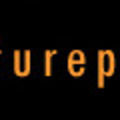Kodak Revolutionizes Image Capture with New High-Resolution CMOS Image Sensor

ROCHESTER, N.Y., Feb. 4 -- Eastman Kodak Company (NYSE:EK) is enabling a new level of performance in consumer imaging devices by redesigning the basic building blocks used to collect light and is incorporating that technology into a brand-new sensor.
The company has combined its recently announced Color Filter Pattern technology with a new CMOS pixel to create the KODAK KAC-05020 Image Sensor, the world’s first 1.4 micron, 5 megapixel device. Designed for mass-consumer camera applications such as mobile phones, Kodak’s new sensor enables a new level of resolution in small optical formats, using significantly smaller pixels. But unlike other small-pixel sensors which can produce poor images, especially under low light conditions, the 1.4 micron pixel used in the KAC-05020 Image Sensor changes this convention, providing image quality that can equal or surpass what is available from current devices using larger, 1.75 micron pixel CMOS designs.
“Camera phones and other small-pixel consumer imaging devices often suffer from poor performance, especially under low light conditions. To manufacture sensors that utilize these very small pixels – only two to three times the wavelength of visible light – we needed to challenge everything we knew about pixel and sensor design,” said Chris McNiffe, General Manager of Kodak’s Image Sensor Solutions business. “By completely rethinking the design of the CMOS pixel and leveraging our work with high sensitivity color filter patterns and algorithms, Kodak was able to develop this remarkable new sensor that will enable a level of imaging performance previously unavailable from CMOS devices.”
Key to the performance of this new sensor is the KODAK TRUESENSE CMOS Pixel, a re-engineering of the fundamental design and architecture of traditional CMOS pixels. In a standard CMOS pixel, signal is measured by detecting electrons that are generated when light interacts with the surface of the sensor. As more light strikes the sensor, more electrons are generated, resulting in a higher signal at each pixel. In the KODAK TRUESENSE CMOS Pixel, however, the underlying “polarity” of the silicon is reversed, so that the absence of electrons is used to detect a signal. This change enabled a series of improvements to the design and structure of the pixel that ultimately results in CMOS imaging performance that rivals that available from CCD image sensors.
Light sensitivity in the new sensor is enhanced through the use of the recently announced KODAK TRUESENSE Color Filter Pattern, which adds panchromatic, or “clear,” pixels to the red, green and blue pixels already on the sensor. Since these pixels are sensitive to all wavelengths of visible light, they collect a significantly higher proportion of the light striking the sensor. This provides a 2x to 4x increase in sensitivity to light (from one to two photographic stops) compared to current sensor designs, improving performance in low light and reducing motion blur in action shots.
At 5 million pixels, the KAC-05020 provides the highest resolution available in the popular ¼” optical format, and enables imagery up to ISO 3200 and support for full 720p video at 30 fps. The sensor is also supported by the Texas Instruments’ OMAPTM and OMAP-DM solutions, enabling a host of KODAK Image Processing and Enhancement Features (such as digital image stabilization, rapid auto-focus, red-eye reduction, and facial recognition) that provide digital camera-like performance in a camera phone.
“For consumers today, high resolution is required but no longer sufficient,” said Fas Mosleh, Worldwide Director of CIS Marketing and Business Development for Kodak’s Image Sensor Solutions business. “Smaller and thinner camera phones, high performance under low light, and superior video performance are the types of features that will enable the next generation of consumer imaging devices. And with this new Kodak sensor, camera designers can now put those features directly into the hands of their customers.”
The new sensor expands Kodak’s portfolio of CMOS and CCD image sensors for consumer and applied imaging applications, and positions the company to take advantage of the growing demand for high-quality image capture in a variety of devices, regardless of size.
The KAC-05020 will be demonstrated by Kodak at the GSMA Mobile World Congress held Feb 11 – 14 in Barcelona, Spain. Samples of the KAC-05020 are scheduled to be available in Q2 2008.
For additional information, please contact Image Sensor Solutions, Eastman Kodak Company at (585) 722-4385 or by email at imagers@kodak.com. For more information on Kodak’s entire image sensor product line, please visit www.kodak.com/go/imagers.


 Kodak has announced a new sensor which promises to improve the efficiency of CMOS designs with extremely small photosites. The new technology is to be offered initially in 1/4" format suitable for mobile phone cameras but should be scalable to larger formats should the concept prove successful. Conventional designs count electrons which are generated when light hits the silicon from which they are constructed but this new chip works in roughly the opposite fashion, reversing the 'polarity' of the silicon in order to measure the 'holes' which remain when electrons are generated. The Kodak KAC-05020 also incorporates Kodak's TRUESENSE Color Filter Pattern which adds panchromatic (transparent) filters to the usual Red Green and Blue, further improving luminance sensitivity.
Kodak has announced a new sensor which promises to improve the efficiency of CMOS designs with extremely small photosites. The new technology is to be offered initially in 1/4" format suitable for mobile phone cameras but should be scalable to larger formats should the concept prove successful. Conventional designs count electrons which are generated when light hits the silicon from which they are constructed but this new chip works in roughly the opposite fashion, reversing the 'polarity' of the silicon in order to measure the 'holes' which remain when electrons are generated. The Kodak KAC-05020 also incorporates Kodak's TRUESENSE Color Filter Pattern which adds panchromatic (transparent) filters to the usual Red Green and Blue, further improving luminance sensitivity.

Comment